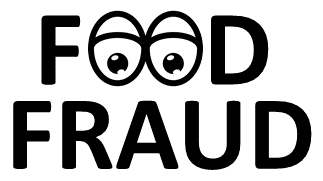



 3 votes
3 votes
The Top 3 non-conformities in food fraud audits and how to fix them
food fraud gfsi

Since the horse meat food fraud scandal in 2013, the GFSI standards have sharpened several requisites to push facilities to improve mitigation measures.
It is well known that meat substitution is not in the top 10 of food products with most risk of adulteration or substitution. The BRC standard, already in V7, created new requisites (under the point 5.4), and a food fraud Compliance Guide.
Since then, the top 3 non-conformities are the following:
1. Individual ranking of each of the elements of the vulnerability assessment:
When categorizing information under the likelihood of occurrence or detection, the sites assess for every single event, such as: historic incidents, geographic origin, emerging concerns, length and complexity of the supply chain, economic factors/price fluctuations, physical form (e.g. whole items, chopped, minced, powdered or liquid), geographic origin/length and complexity of the supply chain, existing controls (e.g. audits), ease of access to raw materials, routine product testing, nature of the raw material, ease of access to raw materials (e.g. broken tamper-proof seals are clear evidence of an attempt to access), availability (e.g. seasonality/harvest variability), complexity and cost of committing the fraud, etc.
My advice:
Either you select a traditional risk assessment tool such as simple quadratic methods or quadrant graph, providing a structured and standardized approach, TACCP, VACCP or you chose to multiply three ratings to obtain a PRN score, (Priority risk number) = Occurrence (O) × Detection (D) × Profitability (P). In both cases ALL elements shall be evaluated to obtain a final rank. This rank can be used either for individual raw materials from different suppliers, or to group raw materials from the same supplier
2. Fail to consider the overall rank value of the vulnerability assessment as an input for the supplier risk assessment
Where the raw materials are identified as being of significant risk of adulteration or substitution, the appropriate assurance controls need to be in place to ensure that only the genuine materials are purchased. This way the potential for fraudulent activity in the supply chain can be assessed.
My advice:
The overall rank of potential food fraud shall be an additional input in the supplier approval and monitoring system. The supplier management and the food fraud assessment are not separate and independent of each other for a food processing plant, but one feedbacks the other.
3. Fail to develop specific mitigation measures
Keep in mind that the GFSI certified companies have been found to be guilty of food fraud, so the CoA provided by the supplier, or a certificate sent by the supplier, or any analytical test done by the supplier are NOT specific mitigation measures. I´ve seen several examples of fraudulent BRC or IFS certificates for key raw materials over the years, for example saffron from Iran. The facility must take ownership and run the tests with independent laboratories.
My advice:
These are valid examples of specific detection and identification techniques that need to be carried out by the external accredited laboratories contracted by the food processors:
- Stable isotope ratio analysis (SIRA),
- TLC and HPLC for artificial color added to saffron
- Microscopic ID for non-compliant herbs, such as savory, thyme or marjoram in oregano
- UV absorbance to detect the potential adulteration of extra virgin olive oil with refined oils.
- PCR method for meat
About the Author
Leila J Burin, PhD Food Chemistry.
Lead Auditor in BRC, IFS, FSSC 22000, ISO 22000. I work as a food safety auditor since more than 20 years, started my career in Latin America and for the last 12 years I have been working in Europe. I have a scientific background with a PhD in Chemistry and over the years I work with most recognized standards and categories in the food industry such as HEINZ, BRC, IFS, FSSC22000, SQMS, LIDL, and several others. Since 2010 I am also the Training Coordinator for “Portal de Inocuidad” which is an on-line training service for Spanish speaking food safety professionals. Also, BRC ATP since January 2020.











